The views expressed in our content reflect individual perspectives and do not represent the authoritative views of the Baha'i Faith.
Between the World and Me
And one morning while in the woods I stumbled
suddenly upon the thing,
Stumbled upon it in a grassy clearing guarded by scaly
oaks and elms
And the sooty details of the scene rose, thrusting
themselves between the world and me….
There was a design of white bones slumbering
upon a cushion of ashes.
There was a charred stump of a sapling pointing a blunt
finger accusingly at the sky.
There were torn tree limbs, tiny veins of burnt leaves, and
a scorched coil of greasy hemp;
A vacant shoe, an empty tie, a ripped shirt, a lonely hat,
and a pair of trousers stiff with black blood.
And upon the trampled grass were buttons, dead matches,
butt-ends of cigars and cigarettes, peanut shells, a
drained gin-flask, and a whore’s lipstick;
Scattered traces of tar, restless arrays of feathers, and the
lingering smell of gasoline.
And through the morning air the sun poured yellow
surprise into the eye sockets of the stony skull….
And while I stood my mind was frozen within cold pity
for the life that was gone.
The ground gripped my feet and my heart was circled by
icy walls of fear–
The sun died in the sky; a night wind muttered in the
grass and fumbled the leaves in the trees; the woods
poured forth the hungry yelping of hounds; the
darkness screamed with thirsty voices; and the witnesses rose and lived:
The dry bones stirred, rattled, lifted, melting themselves
into my bones.
The grey ashes formed flesh firm and black, entering into
my flesh.
The gin-flask passed from mouth to mouth, cigars and
cigarettes glowed, the whore smeared lipstick red
upon her lips,
And a thousand faces swirled around me, clamoring that
my life be burned….
And then they had me, stripped me, battering my teeth
into my throat till I swallowed my own blood.
My voice was drowned in the roar of their voices, and my
black wet body slipped and rolled in their hands as
they bound me to the sapling.
And my skin clung to the bubbling hot tar, falling from
me in limp patches.
And the down and quills of the white feathers sank into
my raw flesh, and I moaned in my agony.
Then my blood was cooled mercifully, cooled by a
baptism of gasoline.
And in a blaze of red I leaped to the sky as pain rose like water, boiling my limbs
Panting, begging I clutched childlike, clutched to the hot
sides of death.
Now I am dry bones and my face a stony skull staring in
yellow surprise at the sun….
– Richard Wright
Visitors slow their pace. Voices fall to a whisper as though entering a reverential space: a church; a mosque; a temple. Sheets of light flood the subdued interior, illuminating pathways for the observant pilgrims. The floor begins a slow descent as the roof seems to rise, lifting 800 steel columns (suspended from the ceiling like ‘strange fruit’, and inscribed with the names of the dead) heavenward. Currents of rust stream down the faces of the empty sarcophagus–tears of oxidation mourning the 4400 lives lost, and the killing fields; places consecrated by the blood of the innocent: Ellis County, Texas; Ascension Parish, Louisiana; Grenada, Mississippi; Craven County, North Carolina; Spartanburg County, South Carolina; Stewart County, Tennessee; Phillips County, Arkansas; Butts County, Georgia. Charles Beal; David Cotton; Unknown; Wiley Johnson; Henry Askew; Unknown; Edward Turner; Ike Anderson; Betsie McCray; Unknown. I am standing in a hall of remembrance; a six acre site in the heart of Montgomery, Alabama made sacred by a symbolic gathering of names and places tied to an unspeakable horror—lynching in America.
I had traveled to this historic city, that once served as the first capital for the Confederate States of America, at the invitation of the Equal Justice Initiative (the human rights organization founded by defense attorney Brian Stevenson), to celebrate the completion of the nation’s first memorial to the victims of racialized violence. I had traveled here as a multi-disciplinary artist, to see how form, function, memory, meaning and metaphor had been manipulated to provide context to a painful and challenging history. I had traveled here to intone the names of the dead; to reflect on the lives lost, and the disgraceful code of silence that sanctioned the brutal practice of lynching, claiming thousands of victims between 1877 and 1981. I had traveled here to wrestle with the sobering realization that in 2018 the black body still occupies a precarious place in our society strangely reminiscent of a time a deluded society would rather forget.
Kwame Akoto-Bamfo’s powerful sculpture Nkyinkyim, depicting six shackled Africans (fig. 1), startles me as I begin the slow ascent up the paved walking path to the memorial’s entrance. The life-sized concrete figures, including men and women (one holding a child) strike defiant poses as they struggle against the imposed immobility of their restraints. The work is a literal interpretation of the ‘institution’ that laid the groundwork for what was to come. Conceptually, it represents the starting point, the ideological fissure that objectifies and dehumanizes, making lynching in our recent past, and the disproportionate rate at which black people are murdered by the police in our present (fig. 2) not only possible, but in some sense, inevitable. It’s an important and sobering point to make–poignant and deeply moving.
The central element of the memorial–designed by the Boston based architectural firm MASS Design Group–sits on a gently sloped hilltop freshly manicured with young sod. It’s a large hall-like structure–boxlike in its configuration–that leads visitors through a cavernous space filled with hundreds of monolithic corten steel columns, each engraved with the location of a documented lynching and the name of the victims. The coffin shaped structures are arranged sequentially in a gridded format, each tethered to the ceiling by a rigid steel post. As I entered the memorial the columns were anchored to the floor, like giant headstones marking the site of the condemned innocent. The orientation grounds the installation, and heightens the sense of mass and solidity the deceptively hollow figures imply. Moving through the building, I noticed that the angle of the floor began to slope downward, subtly, gradually, freeing the columns from their earthbound moorings. The roof line remains fixed while I descend creating the illusion that the totemic figures are rising as though pulled by some unseen force. The architectural slight-of-hand is a powerful trick suggesting the transcendent nature of the soul and the revivalist traditions of the black church. What was static has become mobile. What was dead has arisen. What was hidden is now known. As the great poet William Cullen Bryant so eloquently stated: “truth crushed to earth shall rise again.”
As the floating figures reach their zenith, the once crowded floor empties allowing for the free flow of visitors, who gaze upward towards the ascending ‘angels’. A thin sheet of water cascades down a far wall augmenting the sense of lose (fig. 4), of reclamation, and rebirth. It is a libation for the dead; a baptism; a cleansing. At the heart of the building, an open air courtyard at the hill’s crest allows a moment for contemplation and reflection. It is a welcome feature of the design–a point of rest from the emotional impact of the interior space. As I exit the building I am struck by a quote from Toni Morrison’s astonishing novel Beloved inscribed on an exterior wall. It is an excerpt from a sermon delivered by Baby Suggs (the matriarchal moral center of the novel) to a secret gathering of enslaved African Americans:
And O my people, out yonder, hear me, they do not love your neck unnoosed and straight. So love your neck; put a hand on it, grace it, stroke it and hold it up. and all your inside parts that they’d just as soon slop for hogs, you got to love them. The dark, dark liver–love it, love it and the beat and beating heart, love that too.
The quote is brilliantly chosen and skillfully placed. It’s a declarative statement—an affirmation of one’s humanity in the face of sustained brutality and cruelty.
On the park grounds surrounding the building, identical markers to those within the memorial’s interior, have been placed horizontally on the lawn. Arranged in sequential order, they have been grouped according to the state in which each lynching took place. This is a clever choice as it allows one to survey all of the recorded killings in a given state and the county in which it occurred. The affect of seeing hundreds of steel ‘coffins’ placed on the gently sloping lawn is like witnessing a mass burial site similar, in some sense, to the burial grounds in Normandy, France, or the National Cemetery in Washington, DC. It is a startling reminder of the scope of the lose, and that although the victims were almost exclusively black, the legacy of the tragedy is for the nation to bear.
Perhaps the most ingenious feature of the memorial is its mobility. Each one of the duplicate markers will be offered to the county it represents, and once accepted, it will be placed in the ground near the lynching site. The hope is that eventually all 800 markers will be permanently installed in the corresponding locations, making the memorial a roving visual reminder of one of the most tragic periods in the nation’s history. It will also serve as a test of our willingness to face the complexities of our racialized past, and pursue a path of deep and sustained healing—a healing that must be earned through the crucible of truth.
As I left the grounds of the memorial I was filled with a deep an abiding sense of gratitude for the work and vision of Brian Stevenson, and his dedicated and committed colleagues at the Equal Justice Initiative. I was encouraged to see the diverse crowds navigate their way through the park grounds, an affirmation that human tragedy may be localized, occurring in a particular place and time, but its impact is global. I was also reminded of the transformative power of art—its ability to clarify and heal when the intention is directed towards service to humanity.
Abdu’l-Baha, the son of Baha’u’llah, said:
All Art is a gift of the Holy Spirit. When this light shines through the mind of a musician, it manifests itself in beautiful harmonies. Again, shining through the mind of a poet, it is seen in fine poetry and poetic prose. When the Light of the Sun of Truth inspires the mind of a painter, he produces marvellous pictures. These gifts are fulfilling their highest purpose, when showing forth the praise of God.
The memorial is a visceral rendering of an enduring national scar, and yet, when we muster the courage to examine the wound; to treat it; we find that in the end we have healed not only the wounded ‘other’, but ourselves as well.
Racism retards the unfoldment of the boundless potentialities of its victims, corrupts its perpetrators, and blights human progress. Recognition of the oneness of mankind, implemented by appropriate legal measures, must be universally upheld if this problem is to be overcome. – The Universal House of Justice, 1985 Oct, The Promise of World Peace, p. 3


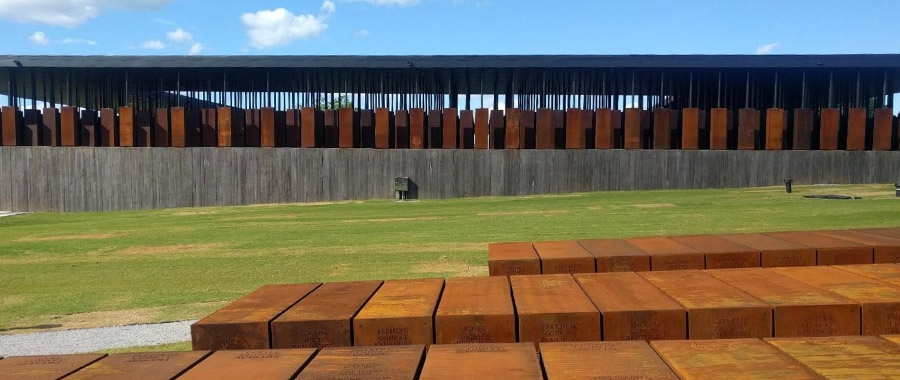
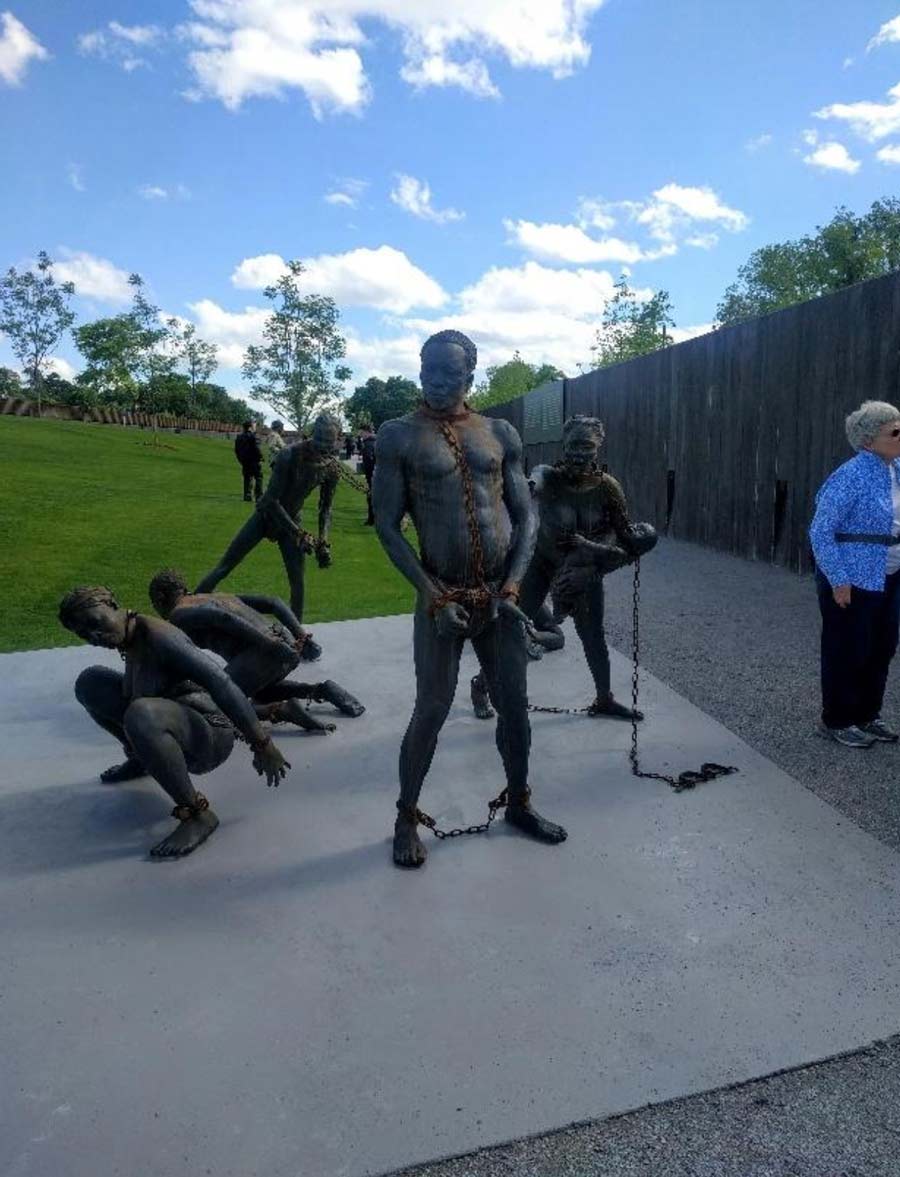
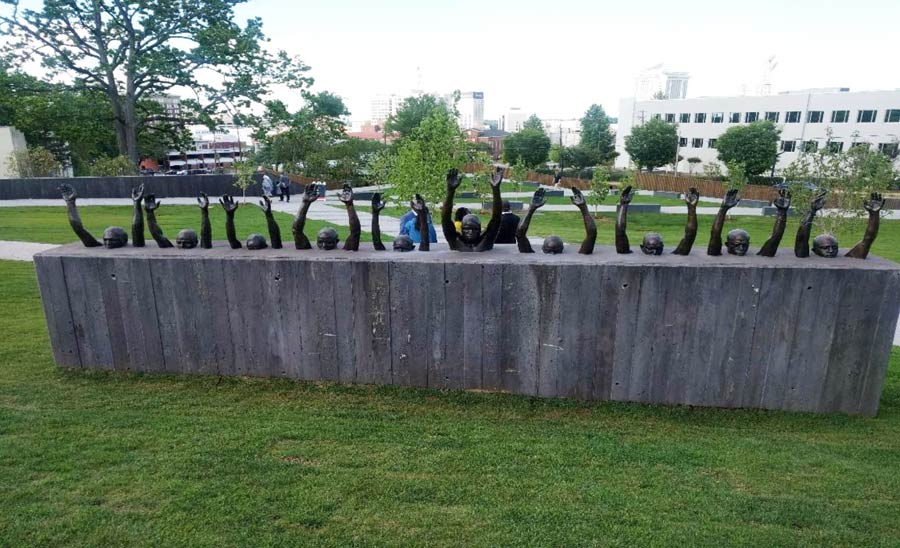
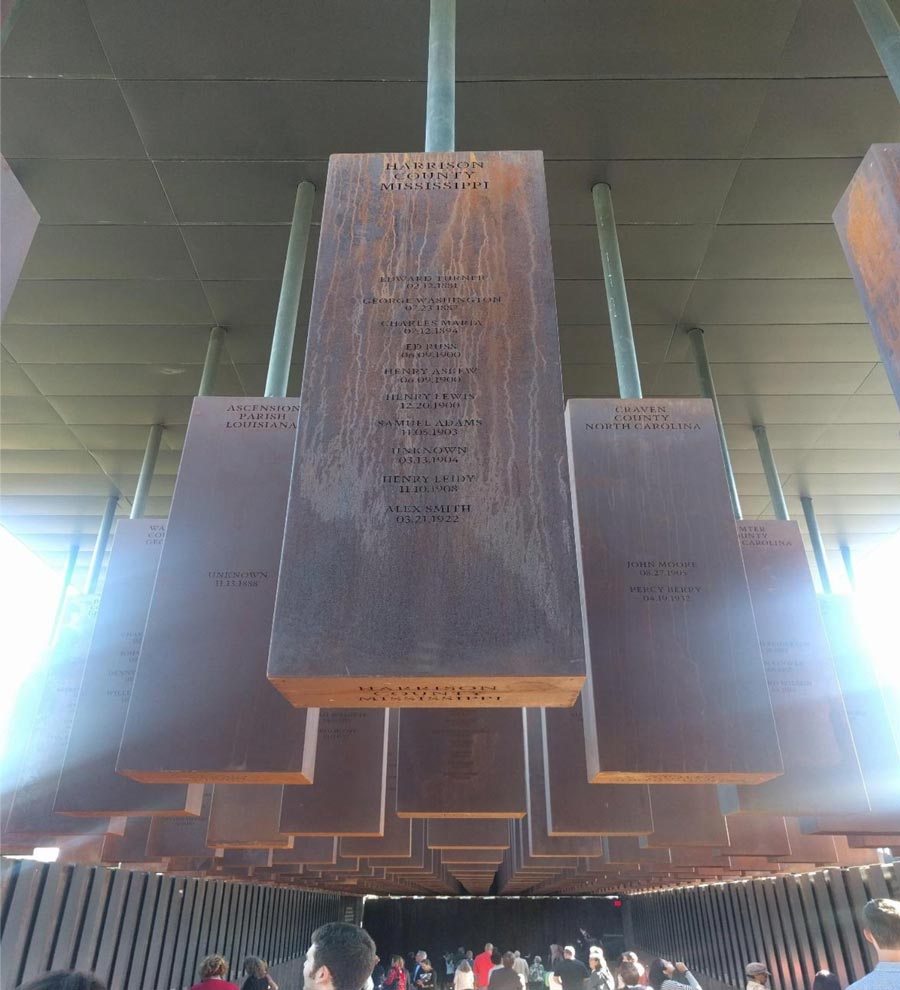



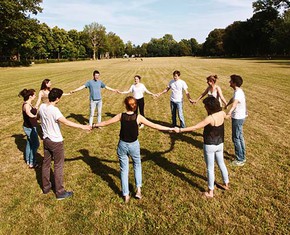










Comments
Sign in or create an account
Continue with Googleor